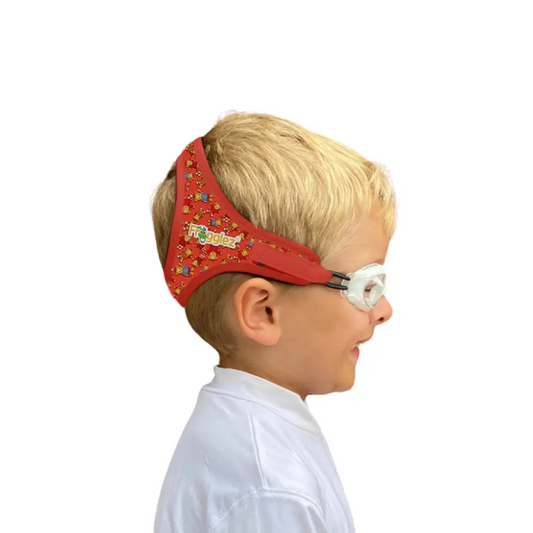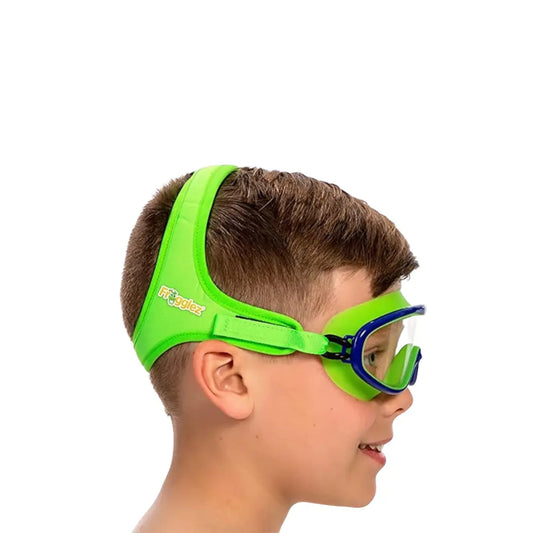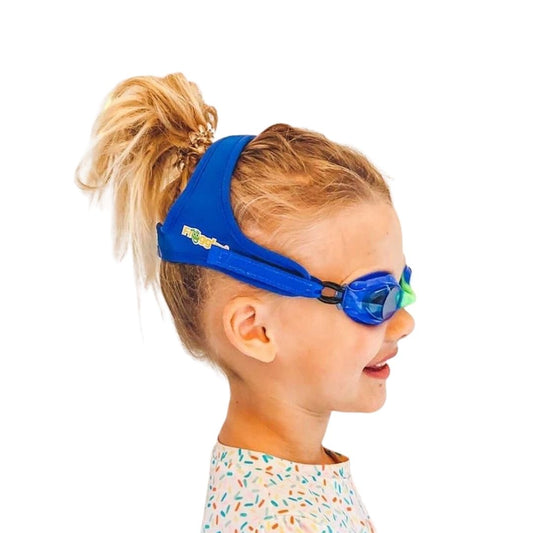Swim goggles reduce drag with a low profile
When you’re splashing around or swimming laps, swim goggles protect your eyes from pool chemicals and any creepy crawlies floating in the water. They don’t cover your nose, and the small, oval shape let you see just enough without slowing you down. In a sport where .01 seconds is the difference between winning and losing a race, the design needs to be as hydrodynamic as possible. The straps provide just enough resistance to keep the watertight seal working without being too tight.
Swimmers are in almost constant contact with the surface, so they don’t need a large viewing field or a covered nose to inhibit breathing. Elite swimmers use a center-mounted snorkel that attaches separately for training purposes.
Snorkel masks cover the nose and hold snorkels securely
Snorkel masks make it easy to breathe with your face in the water while you watch the world float past. They’re made with a lightweight and inexpensive polycarbonate lens attached to a watertight seal. Half masks cover the face from the forehead to the nose, and the straps securely hold the snorkel tube.
With an attached snorkel, you can keep your head under the surface longer. The covered nose and snorkel keep you from breathing through your nose or gagging on water. The design allows snorkelers to breathe comfortably while submerged, but they are too bulky to use in competitive swimming – the size and profile slow swimmers down and block the ability to breathe through the nose.
While it’s possible to use swim goggles while snorkeling, most people will struggle with breathing through the snorkel without a nose plug, resulting in gagging and choking. Additionally, the fragile straps of traditional swim goggles aren’t designed to hold a snorkel, so the weight constantly compromises the watertight seal. Unless you don’t have any other option, don’t try to use swim goggles to snorkel.
Dive masks are sturdy and can go deeper than goggles or snorkel masks
Dive masks are sturdy and durable - designed to withstand the rigors of scuba diving. Air pressure underwater is significantly greater than on land, and it increases as you go deeper. Because your mask traps a thin pocket of air in front of your eyes, deep sea diving can make the mask tighten and apply significant pressure to the area around the eyes. If you go deep enough, the pressure can cause discomfort and bruising. Divers refer to this phenomenon as “the squeeze.” To compensate for the added underwater pressure, dive masks are sturdier than goggles and snorkel masks, with lenses made from tempered safety glass.
If you’re out in the ocean in regular swim goggles, don’t dive deeper than 10 feet. Below this depth, the water pressure becomes too intense and will cause your goggles to squeeze.
The bottom line
While you might be able to use swim goggles to protect your eyes and see more clearly during a snorkeling expedition, never attempt to use goggles or a snorkeling mask in a deep sea diving situation. Although swim goggles, snorkel masks, and diving masks have a lot in common, using the wrong one could subject your eyes and the eyewear to damaging high water pressure. Stay safe by selecting the right eyewear and breathing equipment when you explore underwater.







